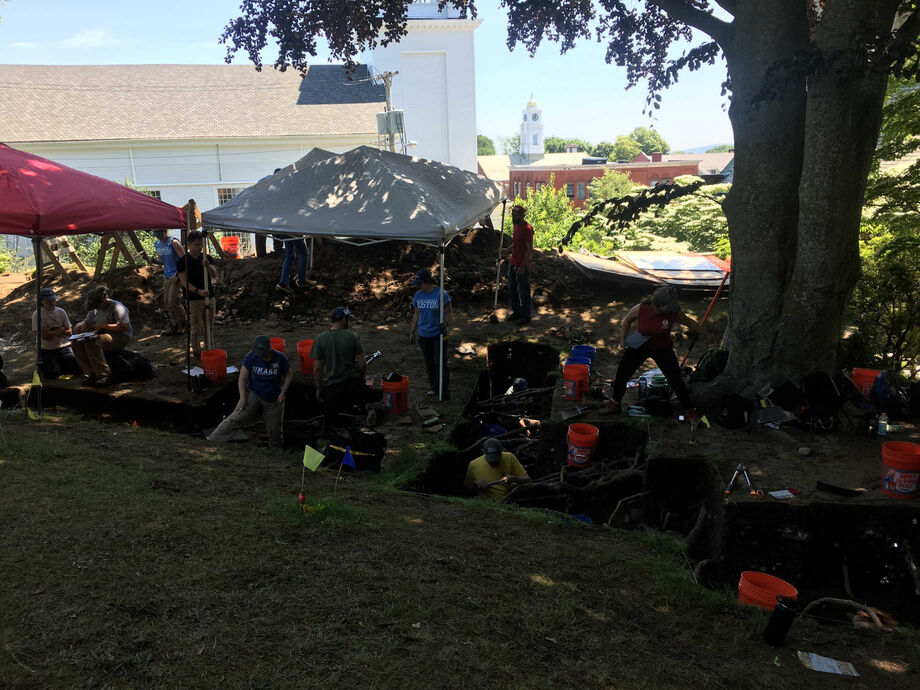Between 2016 and 2019, David Landon led four archaeological digs of sites in Plymouth, uncovering several original seventeenth-century structures, including homesites. The excavations, which uncovered European and Native American pottery and coins dating the sites to the early seventeenth century, suggest a closer relationship between the English colonists and the Wampanoag people than past interpretations. Between 22 and 25 people, including students enrolled in UMass-Boston’s Summer Field School and Wampanoag archaeologists, worked the site at any given time. The artifacts uncovered by the site are of particular interest in the lead up to 2020, the 400th anniversary of the Pilgrims’ landing, and the digs were greeted with enthusiasm by the City of Plymouth, cultural sites, and associations of Pilgrim descendants. Because the sites were located in the center of Plymouth near Burial Hill Cemetery, as many as 80 people per day took part in site tours and overviews.
Plimoth Plantation—the living history center located near the sites—is also benefiting from the collaboration with UMass Boston. Christa Beranek, another archaeologist from UMass Boston, is leading an initiative to digitize Plimoth Plantation’s extensive collection of artifacts recovered during the first excavations of the settlement during the mid-twentieth century. By identifying, cataloging, and digitizing these collections, Beranek’s team of graduate students will make them more accessible to researchers and the public. Plimoth Plantation will also be able to fully access its holdings, making it easier for artisans to create accurate reproductions of items, such as pottery, that were used in the early colony. And archaeology graduate students will have the experience of working with a public history organization, ensuring they are better prepared for the job market.
Both of the projects are helping researchers understand critical details about the early Plymouth Colony that have been left out of the historical narrative—they are also having an impact on how the public understands that narrative. In advance of 2020, Plimoth Plantation undertook a major reinterpretation, also funded by the NEH, and is incorporating these new findings. Ultimately, Plimoth Plantation will offer visitors a more holistic understanding of the seventeenth-century colony and the great changes it witnessed.
